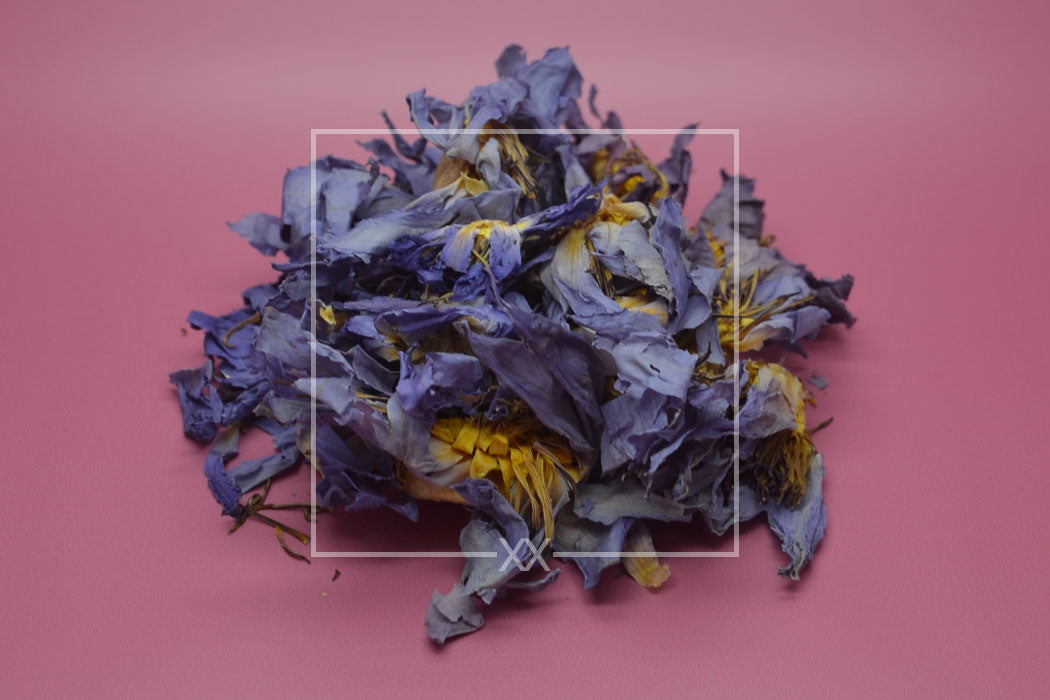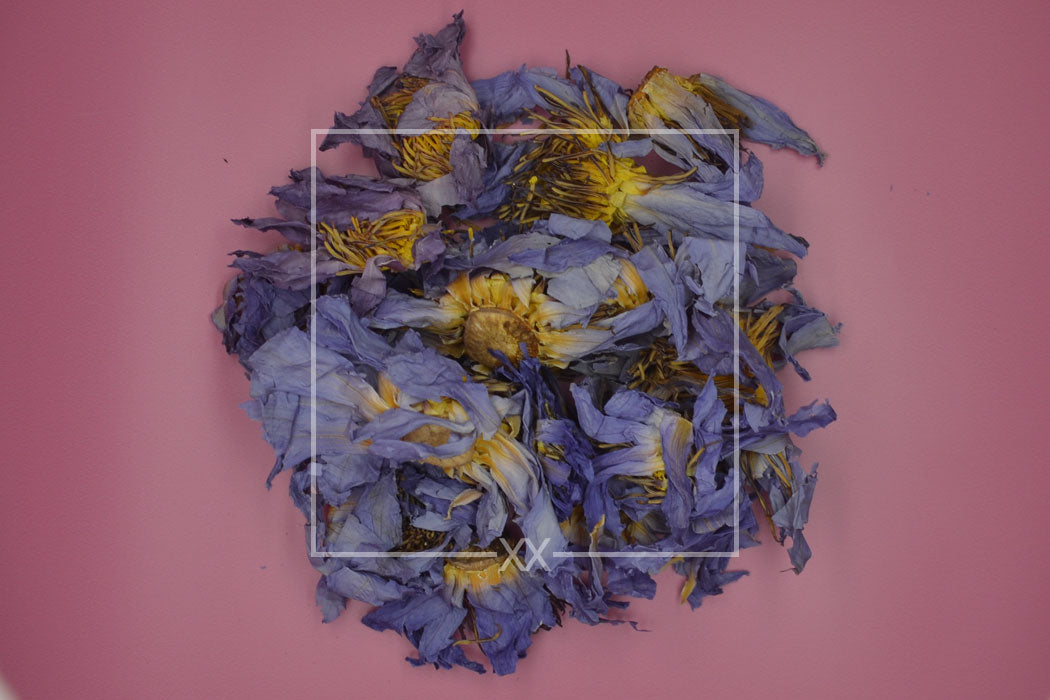- Wij leveren uit eigen voorraad
- Onze producten zijn 100% natuurlijk
- Gratis levering NL, BE en DE bij besteding vanaf€ 75,--
- Levertijd 1 -2 werkdagen
BY GAIA
Nymphaea caerulea Blue Lotus
Nymphaea caerulea Blue Lotus
Couldn't load pickup availability
Latin name: Nymphaea caerulea
Also know as: blue lotus, blue Egyptian lotus, blue water lily, sacred blue lily
Origin: Indonesia
Supplier-ID: AB-1115X
Notice: (Novel Food) Raw plant material not a food in the EU
Nymphaea caerulea – Blue Lotus Flowers
Nymphaea caerulea, commonly known as the Blue Lotus or Sacred Blue Lily, holds a significant place in ancient Egyptian culture, spirituality, and pharmacology. This aquatic plant, with its delicate blue petals, has a rich history spanning thousands of years, captivating the imagination of civilizations throughout the Nile Valley and beyond.
Botanically, Nymphaea caerulea is a member of the Nymphaeaceae family, which includes various water lilies and lotuses. It is native to Egypt and other parts of North Africa, as well as regions of Asia. Growing in shallow waters such as ponds, lakes, and slow-moving streams, the Blue Lotus emerges from the murky depths, symbolizing purity and enlightenment amidst the muddy waters.
In ancient Egypt, the Blue Lotus held profound spiritual significance and was revered as a symbol of creation, rebirth, and the sun god Ra. It was often depicted in Egyptian art, including paintings, sculptures, and hieroglyphics, where it adorned the crowns of pharaohs and adorned the sacred waters of temple pools. The flower’s association with the sun’s daily journey across the sky reflected themes of regeneration and divine illumination.
Beyond its symbolic importance, the Blue Lotus played a central role in Egyptian religious rituals and healing practices. Its petals were infused into wine and consumed as a sacrament during ceremonies to induce states of euphoria, heightened awareness, and communion with the divine. The ancient Egyptians believed that the Blue Lotus possessed mystical properties capable of facilitating spiritual visions, enhancing meditation, and unlocking the gates of the afterlife.
In addition to its ceremonial use, Nymphaea caerulea was valued for its medicinal properties. Ancient Egyptian physicians prescribed preparations of the plant to alleviate various ailments, including anxiety, insomnia, and gastrointestinal discomfort. The Blue Lotus was also revered as an aphrodisiac, believed to enhance libido and sexual pleasure.
Modern scientific research has shed light on the pharmacological properties of the Blue Lotus, confirming its potential as a psychoactive and medicinal plant. Chemical analysis has revealed the presence of alkaloids, flavonoids, and other bioactive compounds responsible for its sedative, anxiolytic, and antioxidant effects. While its psychoactive properties are milder compared to certain hallucinogens, the Blue Lotus continues to attract interest from researchers and enthusiasts alike for its potential therapeutic applications.
In contemporary times, the Blue Lotus remains a symbol of spiritual awakening, inner peace, and connection to the natural world. Its allure transcends cultural boundaries, inspiring artists, poets, and seekers of enlightenment around the globe. Whether admired for its ethereal beauty or revered for its profound spiritual significance, Nymphaea caerulea continues to captivate the human imagination, inviting us to contemplate the mysteries of existence and the eternal dance of life and renewal.
Share
Shipping
Shipping
Delivered to your home within 1 - 3 working days
Return Policy
Return Policy




